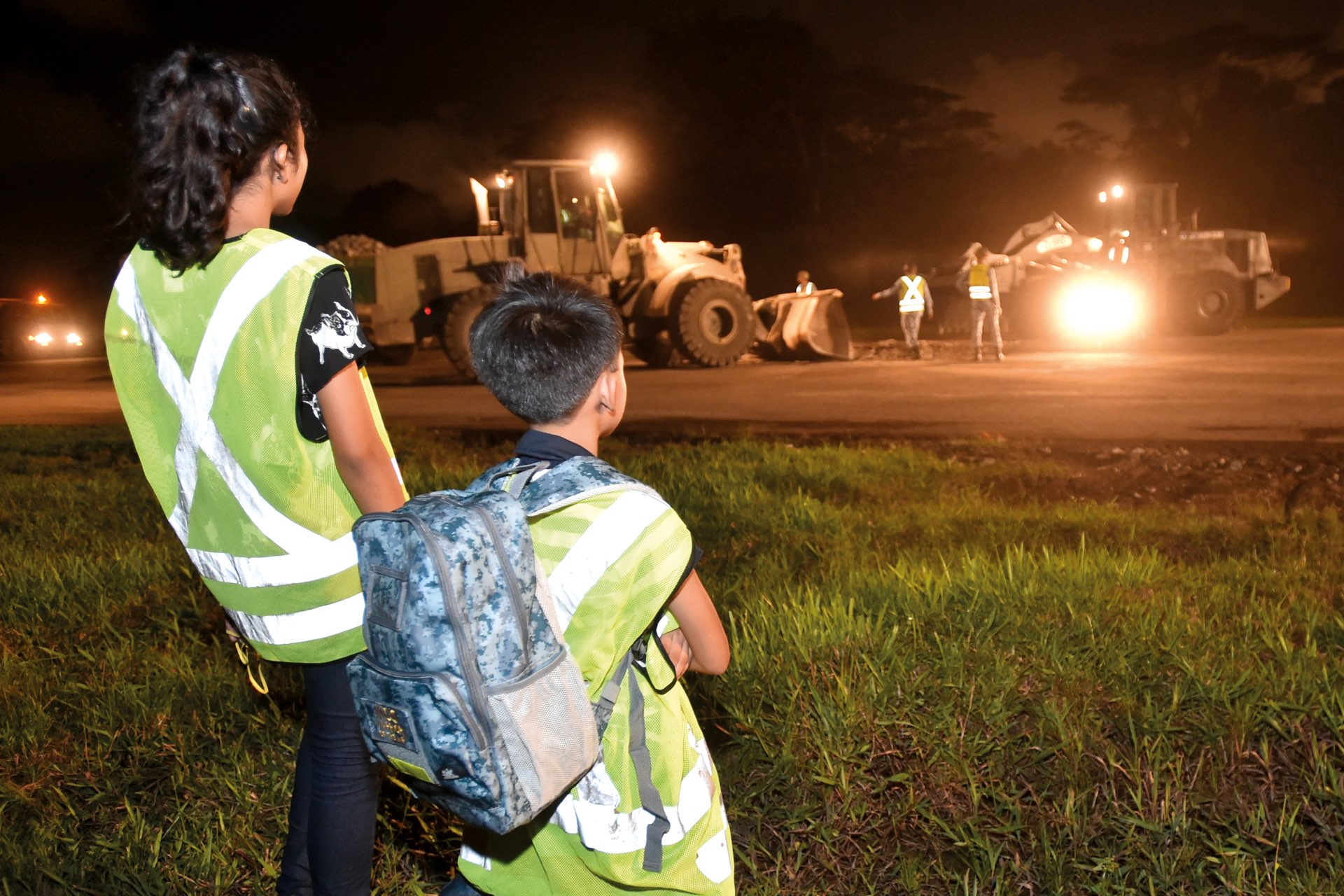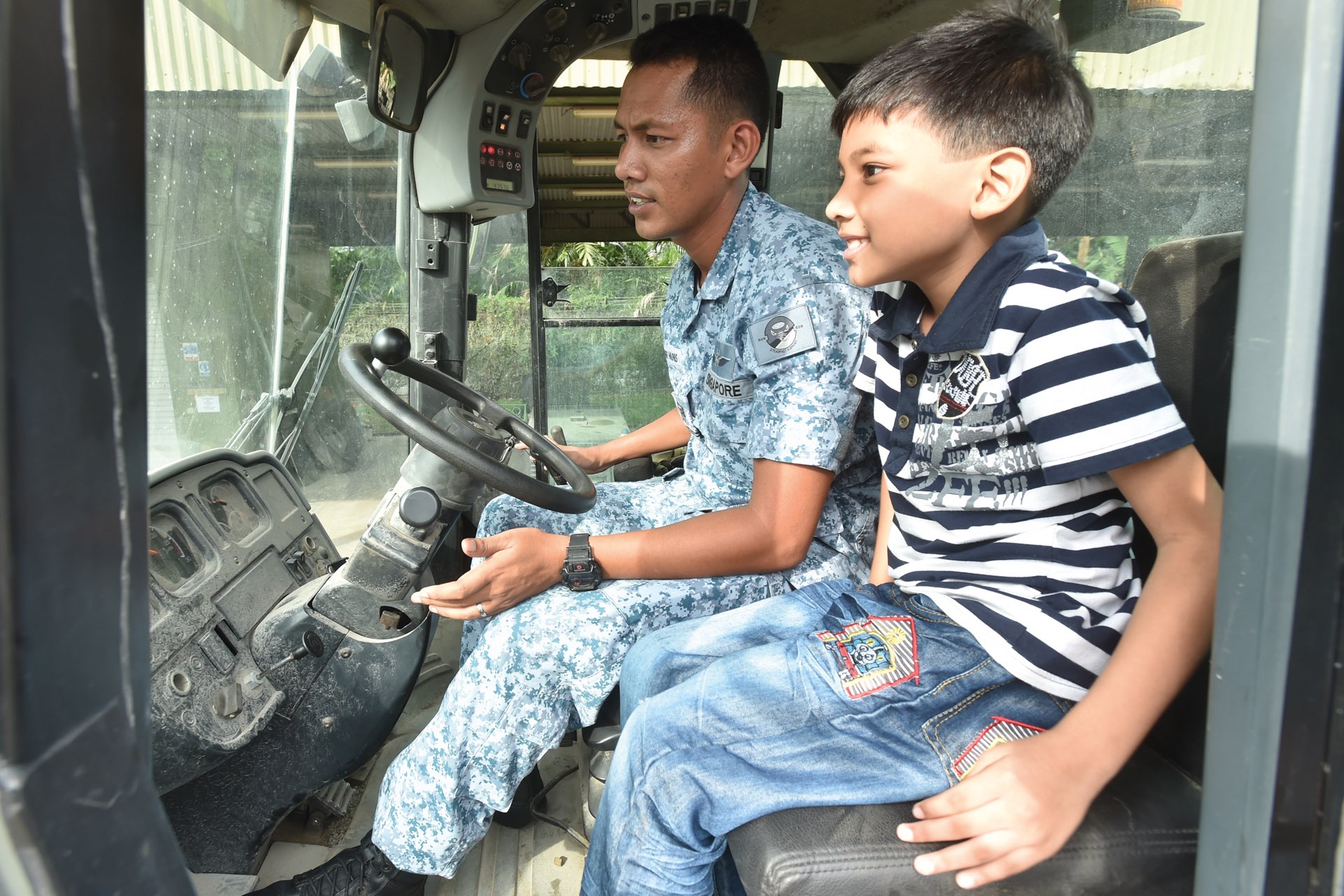PEOPLE
RUNWAY REPAIR
01 Oct 2017
Ethan, 8, and his sister Emily, 12, the children of Military Expert (ME) 2 Oliver Nunis, find out what he does as a rapid runway repair instructor.
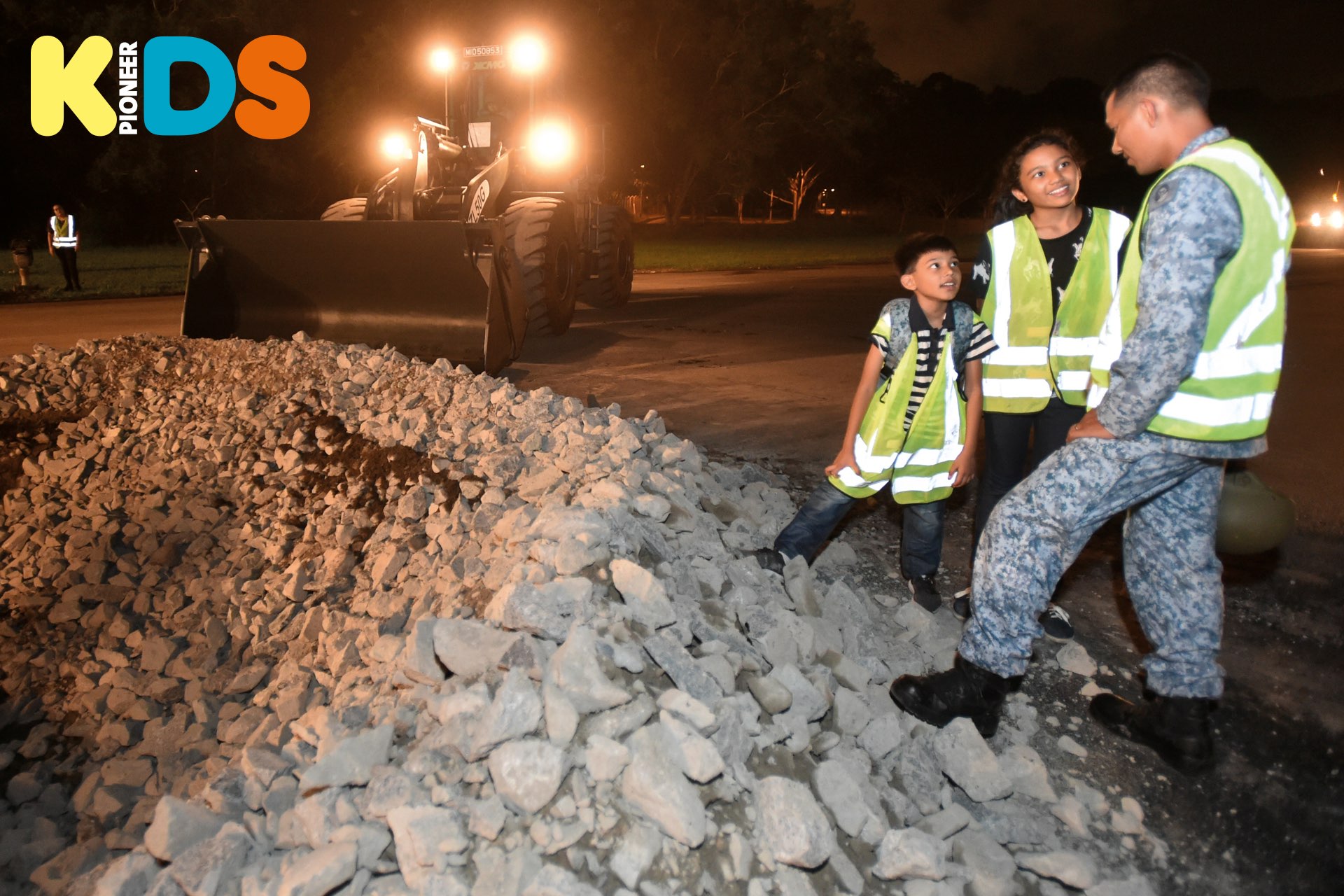
When my sister and I first entered Paya Lebar Air Base, the place seemed a bit scary as there were many gates and soldiers. We had to go through a pass office to check if we had any weapons. The airbase was enormous.
The first location we went to was a two-storey green building. We went up to the second floor so that we could see the runway clearly. We saw both the Republic of Singapore Air Force (RSAF) F-15SG fighter planes and army-coloured planes called the Hercules C-130. I found out later that the C-130s were mainly used to transport people and goods.
We also headed to the ground so that we could watch the F-15SGs take off. I felt very excited even though the sound was very loud.
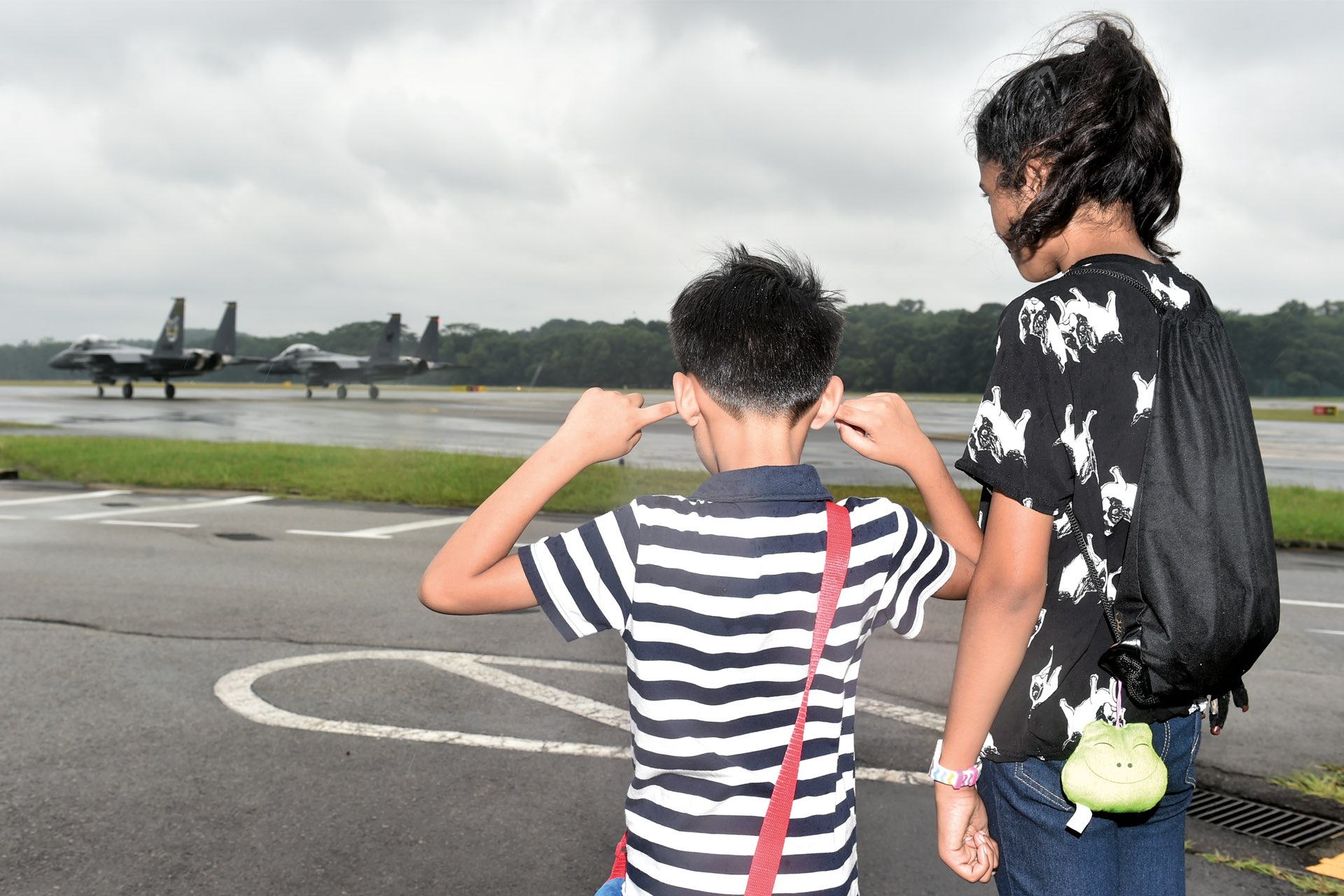
GETTING RUNWAY-READY
Next, we went to my father's squadron. His job is to repair damaged runways so that the planes can take off and land smoothly. He showed us two of the machinery that he operates - the wheel loader and the motor grader. My sister and I took turns to ride in both vehicles as my dad explained their uses.
After dinner, he gave a 15-minute briefing to 11 of his trainees. My father told them to be careful when driving and to put on a reflective vest as the runway was going to be very dark. He also told them to watch out for the big vehicles and not to go behind any of them.
We took a long time walking on the runway as it was huge and long. When we reached the training site, there was an enormous deep hole. There were big rocks and sand all around.
Soon, the vehicles arrived. My father explained that first, the wheel loader will push in the loose rocks. Next, the milling machine will cut the ground to make the hole square-shaped so that the materials can bond better. More rocks and sand will then be added into the hole from the dump trucks.
After the wheel loader spreads the materials into the hole, a 10-ton vibratory roller will go over the layer to compact the material. The motor grader will then make the runway solid so that the RSAF planes can take off and land on it. As his trainees fixed the hole, the ground shook really hard!
My father gave us masks to use in case there was too much sand flying around. I asked my father why he did not use cement to fill the hole and he told me cement would take a long time to dry and cannot take the weight of an aeroplane. The repairs were so loud, I could not hear my sister or myself when I was speaking to her!
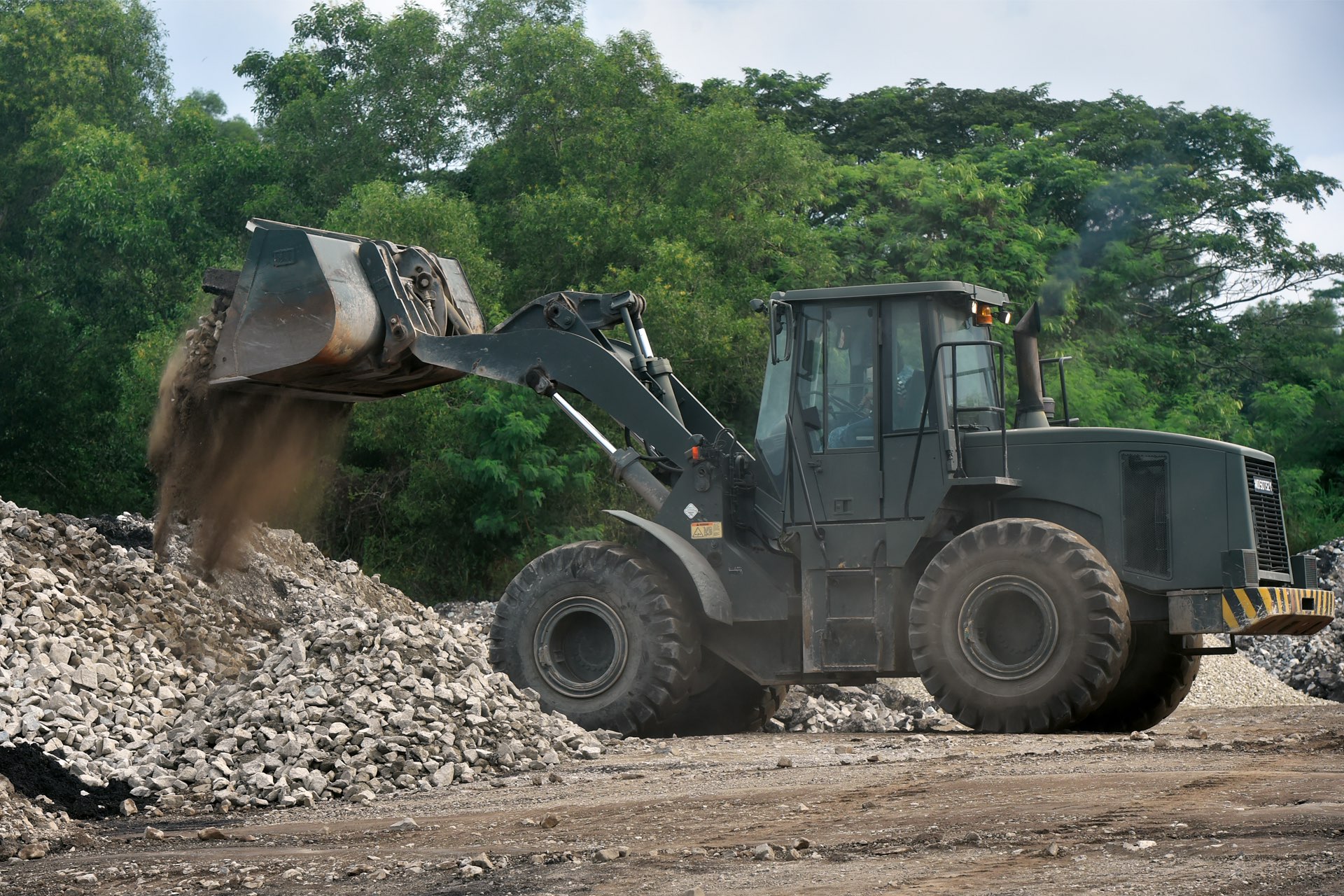
FIT TO FLY
When our father was giving instructions to the trainees, he used several different hand gestures and it looked like he was dancing. But he was doing serious stuff!
Although my sister and I were really tired because we had been at the airbase for seven hours, we refused to go back as it was very interesting to watch.
When they put black sand (hot asphalt) on top, it means the runway repairs have been completed. The black sand made the runway look like a runway and covered up everything.
When the repairs were done, we were amazed. It looked like the damage was never there.
We were very sad when the repairs ended as it might be our first and last time at the runway.
I also understood that my father plays an important role in the RSAF. It may seem like a small part, but it helps Singapore a lot.
If terrorists ever bomb the base, my father and his team will be the ones fixing the runways so that the planes can fly.
Thank you for your service, Daddy
ALSO READ IN PEOPLE

Rising above the tide & stepping forward to lead
13 Dec 2025
They’re among the SAF’s latest batch of officer graduands this year. Meet 2LT Mohamad Wira Kuriniawan and 2LT Ryan Ong, who will be heading to the Navy’s 180 Squadron and 1st Battalion, Singapore Guards respectively.
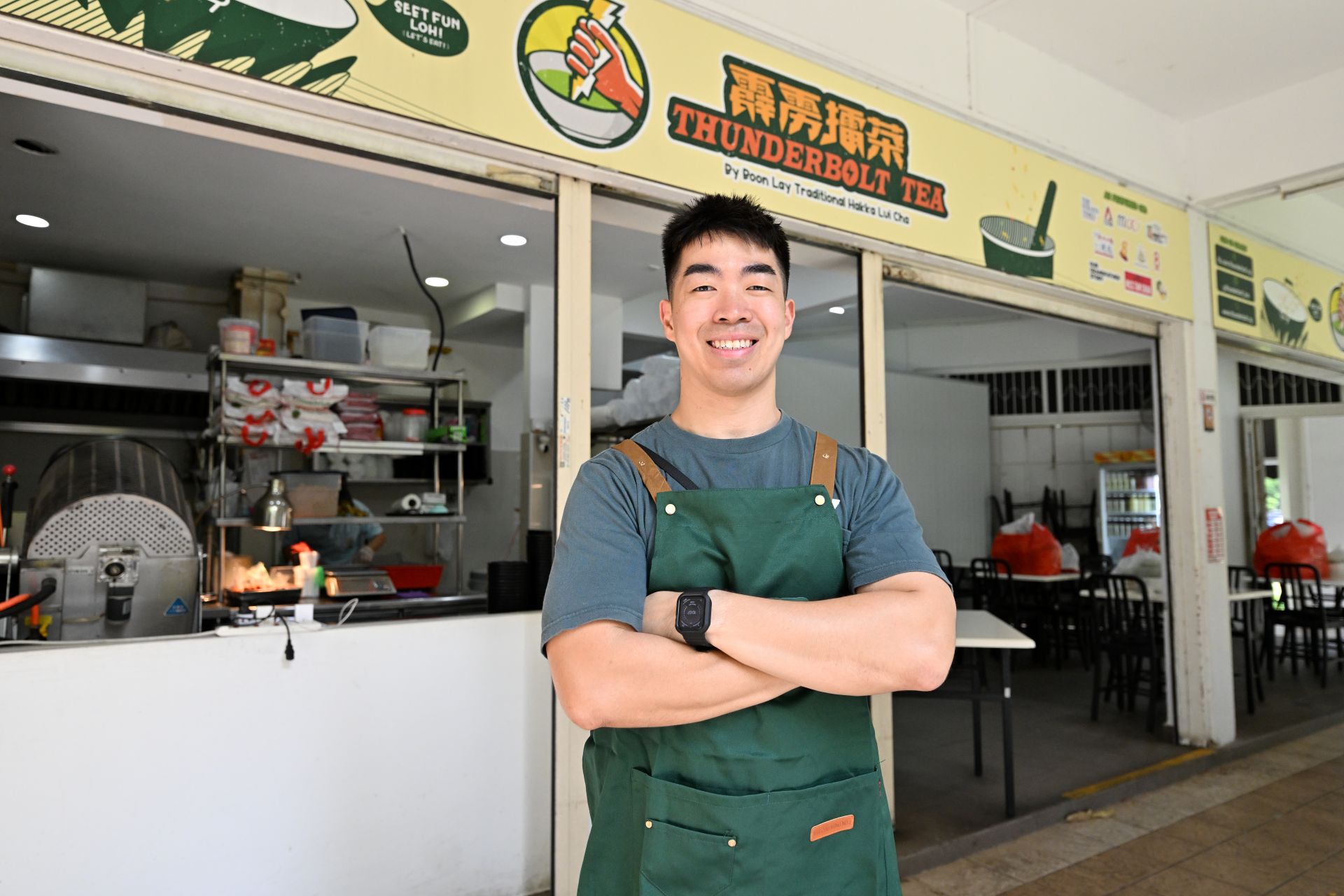
Guardian of the skies, guardian of family heritage
08 Dec 2025

Father & son, bonded by service
02 Dec 2025

